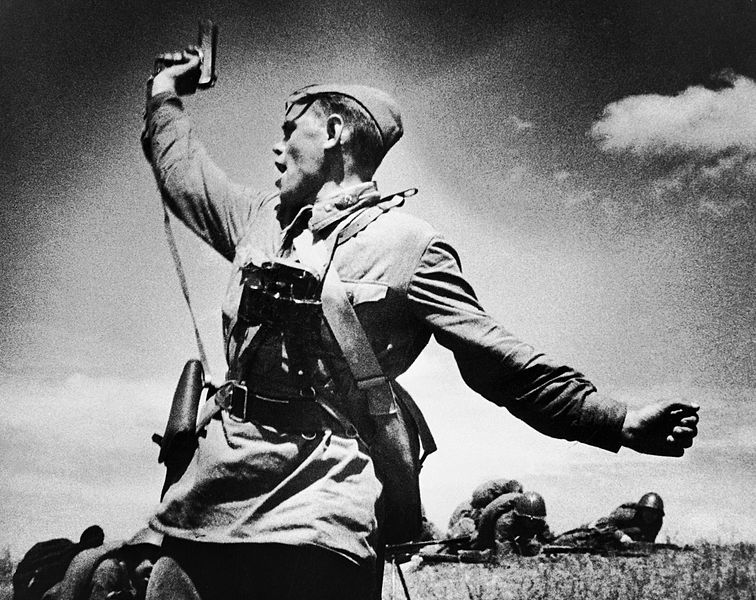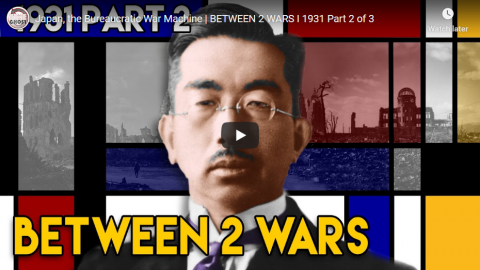Matt Estlea
Published on 3 Sep 2019In this video, we unearth all the hard work we’ve put into the previous steps while constructing this box and see what our finished dovetails look like!
Supporting Videos:
How to Set Up a Plane:
https://www.youtube.com/watch?v=J0ZV8…How to Use a Plane:
https://www.youtube.com/watch?v=MVGvR…
_________________________________________________________________Support what I do by becoming a Patron! This will help fund new tools, equipment and cover my overheads. Meaning I can continue to bring you regular, high quality, free content. Thank you so much for your support! https://www.patreon.com/mattestlea
Don’t want to commit to a monthly direct debit but still want to help out? That’s fine!
You can make a one time donation here: https://www.paypal.me/MattEstlea
You can donate us biscuits here: https://amzn.to/2WOl1UR
_________________________________________________________________See what tools I use here: https://kit.com/MattEstlea
My Website: http://www.mattestlea.com
_________________________________________________________________My name is Matt Estlea, I’m a 23 year old Woodworker from Basingstoke in England and my aim is to make your woodworking less s***.
I come from 5 years tuition at Rycotewood Furniture Centre with a further 1 year working as an Artist in Residence at the Sylva Foundation. I now teach City and Guilds Furniture Making at Rycotewood as of September 2018.
I also had 5 years of experience working at Axminster Tools and Machinery where I helped customers with purchasing tools, demonstrated in stores and events, and gained extensive knowledge about a variety of tools and brands.
During the week, I film woodworking projects, tutorials, reviews and a viewer favourite ‘Tool Duel’ where I compare two competitive manufacturers tools against one another to find out which is best.
I like to have a laugh and my videos are quite fast paced BUT you will learn a lot, I assure you.
Lets go make a mess.
September 4, 2019
Flushing Joinery | Dovetail Box Project #8 | Free Online Woodworking School
Viewing WW2 as “the Air-Sea Super Battlefield”
According to Phillips Payson O’Brien, it’s old-fashioned to view large land battles as being “decisive” in modern warfare:

Kombat (Russian: Комбат, lit. “battalion commander”) is a black-and-white photograph by the Soviet photographer Max Alpert. It depicts a Soviet military officer armed with a TT pistol who is raising his unit for an attack during World War II. This work is regarded as one of the most iconic Soviet World War II photographs, yet neither the date nor the subject is known with certainty. According to the most widely accepted version, the photograph depicts junior politruk (political officer) Aleksei Gordeyevich Yeryomenko, minutes before his death on 12 July 1942, in Voroshilovgrad Oblast, Ukraine.
Wikimedia Commons.
Allied victory in WWII is usually viewed through the lens of large land battles, from Stalingrad to Kursk to D-Day. However, battlefield losses of equipment in these “great” land battles were relatively small and easily replaceable. This column demonstrates that the real effort of the major powers was put into the construction of air and sea weapons. The Allies used their air and sea power to destroy the Axis’s in a multi-layered campaign. This was the true battlefield of WWII: a massive air-sea super battlefield that stretched for thousands of miles. Victory in this super-battlefield led to victory in the war.
Every aspect of WWII is discussed in a vast literature. Considering its diversity, explanations of why Germany lost the war are surprisingly predictable. It remains widely argued that the Nazis were beaten mostly by the Soviet Union’s powerful Red Army (Hastings 2005: 508, Kennedy 2013: 183).
From June 1941 to May 1945, German “power” was supposedly engaged and destroyed by the Russians. At some points, more than two-thirds of German infantry were engaged against the Red Army. The famous battles of the Eastern Front, such as Stalingrad and Kursk, supposedly caused the Germans’ crippling losses. The upshot of this lopsided deployment was that most German soldiers died in the East. Fighting against the Americans and British, conversely, is often portrayed as a secondary concern (Roberts 2010: 573).
What’s wrong with a focus on battles?
This battle-centric view, like much history of WWII, is old-fashioned. Historians of strategy have moved away from seeing battles as determinative. Nolan (2017) has argued that attrition losses are more important than battle losses in explaining outcomes.
The battle-centric analysis implies that infantry deployment is the best way to analyse effort. Yet, human-power was rarely the key factor in deciding combat in WWII. Equipment and specialised training mattered more. Possessing and operating the largest stores of modern weapons, not only tanks and artillery but also aircraft and naval vessels, determined the course of battles and the war.
If we reframe the discussion of the war to look not only at what equipment was made but also at how it was destroyed, it emerges that the war was decided far from the land battlefield (O’Brien 2015). The most striking sign of this is how little war production went to the land war and how much went to the combined air-sea war. This was the case for all the powers except the USSR.
Japan, the Bureaucratic War Machine | BETWEEN 2 WARS I 1931 Part 2 of 3
TimeGhost History
Published on 3 Sep 2019In Japan there has been a gradual increase of militarism since the Great War and in 1931 the country goes to war again when they invade Chinese Manchuria based on a false flag terrorist strike at the Mukden railway junction.
Join us on Patreon: https://www.patreon.com/TimeGhostHistory
Subscribe to our World War Two series: https://www.youtube.com/c/worldwartwo…
Hosted by: Indy Neidell
Written by: Spartacus Olsson
Directed by: Spartacus Olsson and Astrid Deinhard
Executive Producers: Bodo Rittenauer, Astrid Deinhard, Indy Neidell, Spartacus Olsson
Creative Producer: Joram Appel
Post-Production Director: Wieke Kapteijns
Research by: Joram Appel and Spartacus Olsson
Edited by: Danile Weiss
Sound design: Marek KaminskySources:
A TimeGhost chronological documentary produced by OnLion Entertainment GmbH.
Sources:
James Fulcher, The Bureaucratization of the State and the Rise of Japan (1988)
Katō Yōko, “The debate on fascism in Japanese historiography”, in: Sven Saaler and Christopher W.A. Szpilman (ed.), Routledge Handbook of Modern Japanese History (2018), 225-236.
Ethan Mark, “Japan’s 1930s crisis, fascism, and social imperialism”, in: Sven Saaler and Christopher W.A. Szpilman (ed)., Routledge Handbook of Modern Japanese History (2018), 237-250.
Penolepe Francks, “The path of economic development from the late nineteenth centre to the economic miracle”, in: Sven Saaler and Christopher W.A. Szpilman (ed)., Routledge Handbook of Modern Japanese History (2018), 267-278.
Sandra Wilson and Robert Cribb, “Japan’s colonial empire”, in: Sven Saaler and Christopher W.A. Szpilman (ed)., Routledge Handbook of Modern Japanese History (2018), 77-91.
Mark R. Peattie, “Nanshin: The ‘Southward Advance’, 1931-1941, as a Prelude to the Japanese Occupation of Southeast Asia”, in: Peter Duus e.a., The Japanese Wartime Empire, 1931-1945 (2010), 190-242.
From the comments:
TimeGhost History
13 minutes ago
This is the third of several episodes that cover the developments in East Asia leading to World War Two. In this episode we look at how Japan by 1931 has developed to be on the brink of a fascist state without anyone specifically taking power or staging a coup. The democratic reforms from the past four decades are dying a death by a thousand cuts as the Japanese administration and military simply take one small decision after the other that erodes freedom, dials back democracy, and inevitably leads to war. It’s an anonymous, mechanic, gradual movement towards global conflict proceeding with clockwork precision.This episode also sees the first change to the Between 2 Wars set as Astrid and Wieke have started adapting the set to the changing themes, while we move closer and closer to the outbreak of WW2 — we’d love to hear what you think!
Poor Greta Thunberg
Theodore Dalrymple on the grim-visaged child star of the environmental movement:

Greta Thunberg at the EU Parliament, 16 April, 2019.
European Parliament photo via Wikimedia Commons.
Poor Greta Thunberg! She is to self-righteousness and self-satisfaction what Mozart was to music, namely an astonishing youthful prodigy. Unlike Mozart, however, she is a very unattractive child, her unattractiveness arising not from her natural physical endowment but from the sheer grimness of her humourless puritanism which is inscribed on her face for all to see. She has succeeded in adding a new vision of hell to the many that I already have, namely being preached at by her for all eternity without intermission.
It is said that she suffers from a psychiatric condition, but whether or not this is so, her awfulness (of which, of course, she is blithely unaware) is not really her fault. Her transformation into a celebrity is the work of adults. It is they who have turned her into the Ayatollah Thunberg, the Khomeini of climate change.
In the days when reaching old age was exceptional, almost implying some kind of personal virtue, it was the elderly who were accorded respect and regarded as the repositories of wisdom. But as the old begin to outnumber the young, it is the young to whom falls the mantle. This is because we value the rare. No only does little Greta belong to a minority, but to a minority of that minority, for no one can deny that she is articulate, however monotonous, programmed or lacking in spontaneity her lines might be.
Adolescence in particular is now regarded as the acme of human existence, from which only decline is possible (and Greta exudes an air of permanent adolescence). I still have not quite made up my mind whether our age is the first of the geriatric adolescent or that of the adolescent geriatric, but I not infrequently notice around me seventy- and even eighty-year-olds who try to dress and comport themselves as if they were still about eighteen or nineteen. I find it sad, for of course the march of time is inexorable in its effects, albeit that it is true that it has slowed somewhat and people now age more slowly than they once did thanks, ultimately, to the material prosperity brought about by the creative destruction of capitalism. Nevertheless, the pretence that we have not aged is futile, though it is not futile only: it is both sad and shallow, in that it implies that life subsequent to adolescence has not brought its own rewards, and moreover that one has in effect learned nothing in the meantime, that the very best that can be hoped for is that one’s knowledge and wisdom, which plateaued at the age of eighteen, have maintained that elevated level ever since.
Based upon my experience of the elderly, I view the arrival of the adolescent geriatric, or the geriatric adolescent, with some consternation or trepidation. From a very early age I have had a liking for the elderly, often preferring them to the young, especially the young of my own and subsequent generations, but I have to admit that when an old person is nasty or querulous, he or she tends to be very nasty or querulous indeed, and exceedingly difficult to handle. In so far as adolescence is an age of egoistic querulousness, therefore, the prospect is daunting of an increase in bad-tempered geriatrics, angry that, despite their wish that they should remain adolescent forever (a wish that they are likely to confuse with a right because they have lived through a period when wishes rapidly transformed themselves into rights), they continue to age and will one day die. The Bible might tell us that there is a time and place for everything, but in the worldview of the geriatric adolescent, there is no time or place for old age.
English spelling – a bit mad, but perhaps the best system around
Lindybeige
Published on 12 Nov 2015Support me on Patreon: https://www.patreon.com/Lindybeige
Many people think that the English system of spelling is just mad. The random quirks of history have certainly played their part, and today we have spellings that follow so many different rules that at times it can seem just random. However, here I argue that actually the fact that our spelling does not match our pronunciation is a strength, not just a weakness.
I see from the comments that several viewers have misunderstood me, and have thought that I am saying that only when people are reading English do they recognise words in the same way as we recognise faces. No, this is how people read in all languages. This being the case, phonetic spelling is not such a great advantage, since people are not decoding the words using sound, and spelling based on derivation has advantages.
Lindybeige: a channel of archaeology, ancient and medieval warfare, rants, swing dance, travelogues, evolution, and whatever else occurs to me to make.
QotD: Goth problems
I’ve never actually seen an extremely beautiful goth girl myself — most of them seem to have weight problems, which has always struck me as strangely contradictory. From the neck up, the look cultivated by goth girls seems to say, “O, we despair of this world and long for the sweet embrace of death!” From the neck down, their look seems to say, “I’ll take the bacon cheeseburger, two orders of fries, and a Diet Coke, please.”
Dan Savage, The Onion A/V Club, 2004-08-04.






